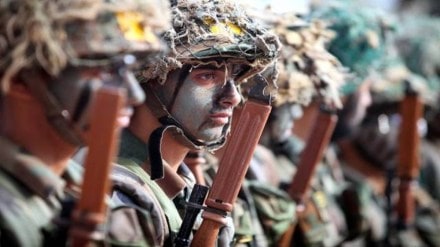The Indian Army has announced major changes which will enable it to absorb niche technologies to counter emerging threats and to secure its own networks it will have a dedicated cyber-operations cell.
These decisions which are in line with the Army’s efforts to keep up with the new technologies were taken at the Army Commanders Conference (April 17-21).
In view of the rapid migration towards net centricity, which involves an increased reliance on modern communication systems, the Commanders not only reviewed the requirement to safeguard the networks, they decided to operationalise Command Cyber Operations and Support Wings (CCOSW) in the immediate future.
Sources in the defence and security establishment said the expansion of cyber warfare by India’s adversaries have made the cyber domain more competitive than ever before.
And to further augment the capabilities of the forces by absorption of Niche Technologies, Lead Directorates and ‘Test Bed’ Formations will be nominated as these are expected to help to evolve optimal employment philosophies Pan Army.
Indian Army Chief Gen Manoj Pande and Commanders of other commands and senior officials also took stock of the emerging security threats and together they reviewed the operational preparedness of the Indian Army. As part of `year of Transformation’ which was announced earlier this year, they also reviewed the progress made on the ongoing transformational initiatives related to modernization and technology infusion, force structuring, jointness and integration. And they together identified actionable points and specific areas for promoting integration and jointness with other services as well as government agencies.
Adoption of Niche Technologies
The Indian Army has started inducting niche tech-enabled equipment and these include electronic warfare, anti-drone equipment, multiple types of drones, and loitering weapon systems.
Technical Entry Scheme
A new technical entry scheme (TES) for officers which is expected to be enforced from January 2024 was also approved. Under the existing TES to the Indian Army as BTech graduates it is a five year education model which was introduced in 1999. Under the current model of five year programme – military training at the Officers Training Academy (OTA) in Gaya, followed by three years B Tech degree is taught and this is then followed by one year at one of the three engineering colleges of Indian Army. And now a decision has been taken to adopt a four year model which means it will now be three years of training which is focused on technical training. This will be followed by one year of military training at Indian Military Academy (IMA), Dehradun. This is expected to address the shortage of officers. The Army plans to procure around 435 simulators at a cost of Rs 791 later this year for Simulator training.
Human Resource Measure
For the children of those soldiers who die in harness, the commanders decided to double the sustenance allowance for children through Army Group Insurance Fund (AGIF).
Paralympics
Combat-hardened soldiers who have become ‘battle casualties’ will be given an option for “Paralympics” events and will undergo screening and those selected will be retained for training.
Potential talent for rowing, swimming, shooting, archery, paralifting, canoeing and kayaking will be identified by the Mission Olympic Wing (MOW).
Thal Sena Bhawan at Delhi Cantt
The work has already started in March this year and is expected to be completed by 2025. This is going to be state of the art building and is expected to be technologically advanced, green, smart and future ready.
This Bhawan is expected to address the shortage of office spaces but also enhance the functional and operational efficiency of the Indian Army Headquarters as all the directorates will be under one roof.
